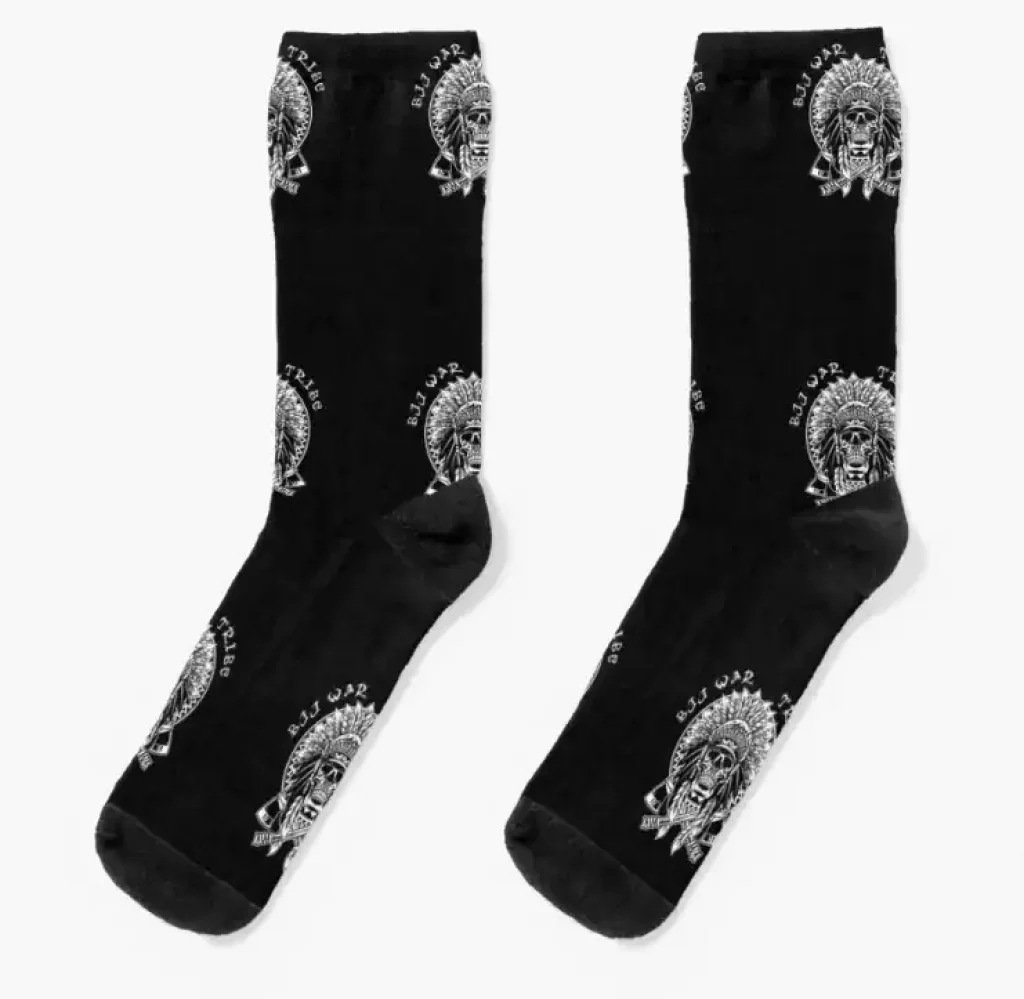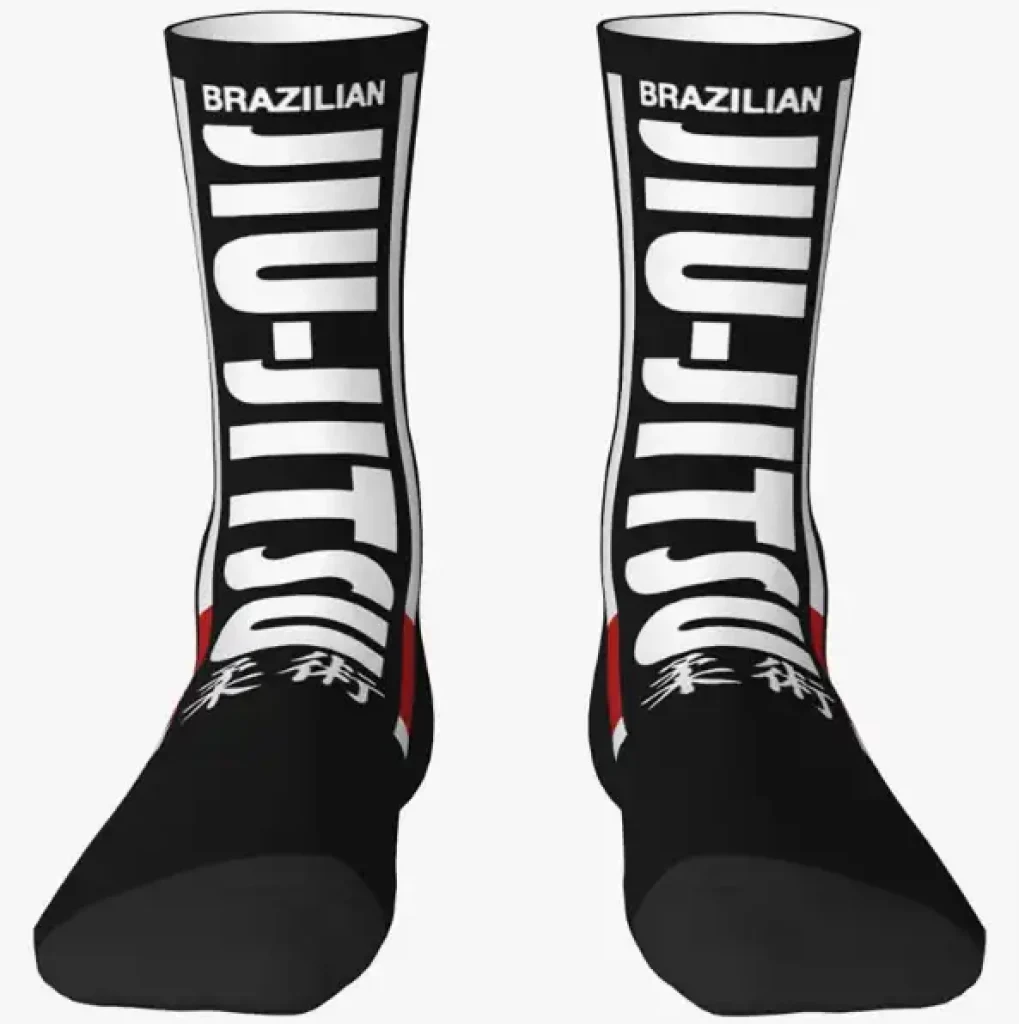8 Best Socks for Jiu Jitsu: For Grip and Comfort in BJJ
Are you tired of slipping and sliding on the mat during your jiu jitsu training or constantly healing mat burns? Do you want to improve your grip and stability during your rolls? Look no further than the right pair of socks. In this article, we’ll explore the 8 best socks for jiu jitsu that offer grip, protection, and comfort to enhance your performance on the mat.
What kind of socks to wear for jiu jitsu to help with grip and stability on the mat?
First and foremost, it’s important to wear socks specifically designed for jiu jitsu or related grappling styles. These socks should offer grip and stability to prevent slipping and sliding on the mat, as well as comfort and support to protect your feet during training.
8 Best Socks for Jiu Jitsu
Here are our top picks for the 8 best socks for jiu jitsu, in no particular order:
#1 Roll Hard Grappling Socks
#2 RDX Grappling Socks
#3 Sanabul Grappling Socks
#4 Ring to Cage Grappling Socks
#5 Roar Socks for Jiu Jitsu and Grappling
#6 Hayabusa Foot Grips
#7 Hayabusa Athletic Socks
You may not want or not need too specific neoprene grappling BJJ socks with rubberized soles. Let’s say you want to find a reliable option from the athletic socks on the market which will fit your needs on the mats.
Here are some picks to consider:
#8 Base 33 Athletic Grip Socks
Jiu Jitsu Novelty Socks
Well, we are experienced jiu jitsu practitioners in very different aspects of this field. So we know, that your search intent for BJJ socks may not necessarily mean jiu jitsu grappling socks for training on the mats. But you may search for a pair of everyday jiu jitsu novelty socks.
Luckily, the market has everything to offer.
Here are some variants to choose from.
These Jiu Jitsu socks are perfect for those who want to show off their love for the sport as they feature a fun jiu jitsu design.
Are there any specific features to look for in jiu jitsu socks?
Yes, there are several specific features that you should look for when choosing jiu jitsu socks:
- Non-slip sole: Look for socks with a non-slip sole that offers excellent grip and traction on the mat. This will help prevent you from slipping and sliding during training.
- Breathable material: Choose socks made from a stretchy, breathable material that provides support and cushioning for your feet. This will help keep your feet cool and comfortable during training.
- Reinforced stitching: Look for socks with reinforced stitching in high-stress areas, such as the toe and heel, to prevent them from wearing out too quickly.
- Moisture-wicking properties: Choose socks with moisture-wicking properties that will help keep your feet dry and prevent blisters.
- Compression fit: Some BJJ socks are designed with a compression fit that can help improve blood flow to your feet and reduce muscle fatigue.
By looking for socks with these features, you can ensure that you are getting the best possible performance and protection during your jiu jitsu training.
Can wearing the wrong type of socks during jiu jitsu training lead to foot injuries or decreased performance?
Wearing the wrong type of socks during jiu jitsu training can definitely lead to foot injuries and decreased performance. Socks that are too thin or have poor traction can cause your feet to slip on the mat, which can lead to ankle or knee injuries.
On the other hand, socks that are too thick or bulky can interfere with your ability to grip the mat and execute techniques properly. This can also lead to decreased performance and an increased risk of injury.
It’s important to choose socks that are specifically designed for jiu jitsu or martial arts training, as they are designed to provide the necessary grip, stability, and support for this type of sport.
How do jiu jitsu socks compare to other types of athletic socks?
Jiu jitsu socks differ from other types of athletic socks in that they are specifically designed for the unique demands of martial arts training. These socks typically feature a non-slip sole that provides superior grip and stability on the mat, as well as a breathable, moisture-wicking material that helps to prevent odor buildup.
Other types of athletic socks may not provide the same level of grip or stability, and they may not be designed to withstand the wear and tear of jiu jitsu training.
It’s important to choose socks that are specifically designed for the type of activity you’ll be engaging in, as this can help to prevent injuries and improve performance.
What are some of the top brands of jiu jitsu socks on the market?
There are several top brands of jiu jitsu socks on the market, including:
- Roll Hard Grappling Socks
- RDX Grappling Socks
- Sanabul Socks
- Hayabusa Foot Grips
- etc.
These brands are known for producing socks that provide the necessary grip, stability, and support for jiu jitsu training. When choosing a brand of jiu jitsu socks, it’s important to consider your specific needs and preferences, as well as the features and benefits of each brand.
How often should you replace your jiu jitsu socks?
The frequency with which you should replace your jiu jitsu socks depends on several factors, including the frequency and intensity of your training, the quality of the socks, and how well you take care of them.
On average, high-quality jiu jitsu socks should last for at least 6 months to a year with regular use, but this can vary depending on the factors mentioned above.
It’s important to regularly inspect your socks for signs of wear and tear. Look for holes, frayed edges, or any other signs of damage that could compromise the integrity of the sock. If you notice any damage, it’s best to replace your socks immediately to prevent any further damage or injuries.
Do different types of jiu jitsu socks work better for gi or no-gi training?
While some BJJ grappling socks are marketed specifically for gi or no-gi training, most socks can be worn interchangeably for both types of training.
The main difference between gi and no-gi training is the type of clothing worn during training, with gi training involving a heavy, traditional uniform and no-gi training involving more lightweight, athletic clothing.
However, the type of socks you wear may also depend on your personal preference and the specific training environment.
For example, if you’re training in a colder climate, you may prefer thicker, more insulating socks for both gi and no-gi training. Conversely, if you’re training in a hot and humid environment, you may prefer thinner, more breathable socks.
How do jiu jitsu socks compare in terms of cost?
The cost of jiu jitsu socks can vary widely depending on the brand, material, and quality. While some high-end socks can cost upwards of $30 or more per pair, there are also many budget-friendly options available for under $10-$20 per pair.
When choosing socks, it’s important to strike a balance between cost and quality. While you don’t necessarily need to break the bank on a high-end pair of socks, it’s also important to avoid choosing the cheapest option available, as these socks may not provide adequate support, cushioning, or grip on the mat.
Are there any budget-friendly BJJ socks that still offer quality and performance?
Yes, there are many budget-friendly options available for jiu jitsu socks that still offer quality and performance. Some popular budget-friendly brands include Sanabul and Roar.
When choosing budget-friendly socks, it’s important to pay attention to the material and construction. It’s also important to read reviews from other customers to get a sense of the socks’ durability and overall quality.
What are some common mistakes to avoid when choosing and wearing jiu jitsu socks?
One common mistake when choosing jiu jitsu socks is choosing socks that are too thick or too thin. Socks that are too thick can be cumbersome and restrict movement, while socks that are too thin may not provide enough cushioning or support on the mat.
Another common mistake is choosing socks that are too loose or too tight. Socks that are too loose can slide around on the foot, reducing their effectiveness and potentially causing blisters or other injuries. Socks that are too tight can constrict circulation and cause discomfort or even pain.
Finally, it’s important to avoid wearing socks that are dirty or worn out. Dirty socks can harbor bacteria and cause infections, while worn-out socks can offer less support and cushioning on the mat.
It’s important to regularly inspect and replace your socks as needed to ensure optimal performance and hygiene.
FAQs about Jiu Jitsu Socks
Can I wear socks in BJJ?
Yes, you can wear socks in BJJ. In fact, some practitioners choose to wear socks to help with grip and stability on the mat.
However, it’s important to choose socks that are specifically designed for grappling to ensure that they offer adequate grip and stability. Wearing regular athletic socks during jiu jitsu training can increase the risk of slips and falls, which can lead to injuries.
When it comes to choosing the right jiu jitsu socks, there are several factors to consider, such as material, thickness, grip, and fit.
Another important factor to consider when choosing jiu jitsu socks is grip. Look for socks that have a non-slip sole or grip pads on the bottom to help you maintain traction on the mat. Some socks also have extra grip on the top of the foot, which can be helpful for gripping your opponent during certain moves.
In terms of fit, jiu jitsu socks should be snug and form-fitting without being too tight.
Ultimately, the best way to determine whether a particular pair of jiu jitsu socks is right for you is to try them out during training. Pay attention to how they feel on your feet, how well they stay in place, and whether they provide the level of grip and support you need. With a bit of trial and error, you should be able to find the perfect pair of socks to help you perform at your best on the mat.
Do you have to be barefoot in jiu jitsu?
In most traditional jiu jitsu classes, it is customary to train barefoot. This is because it allows for better grip and traction on the mat, as well as greater flexibility and mobility for your feet.
However, some jiu jitsu schools and instructors may allow or even require the use of socks or grappling shoes. This may be particularly common in no-gi jiu jitsu or other styles of grappling where footwear is allowed.
It’s always best to check with your instructor or the rules of your specific class or tournament before deciding whether to wear socks or shoes during jiu jitsu training.



